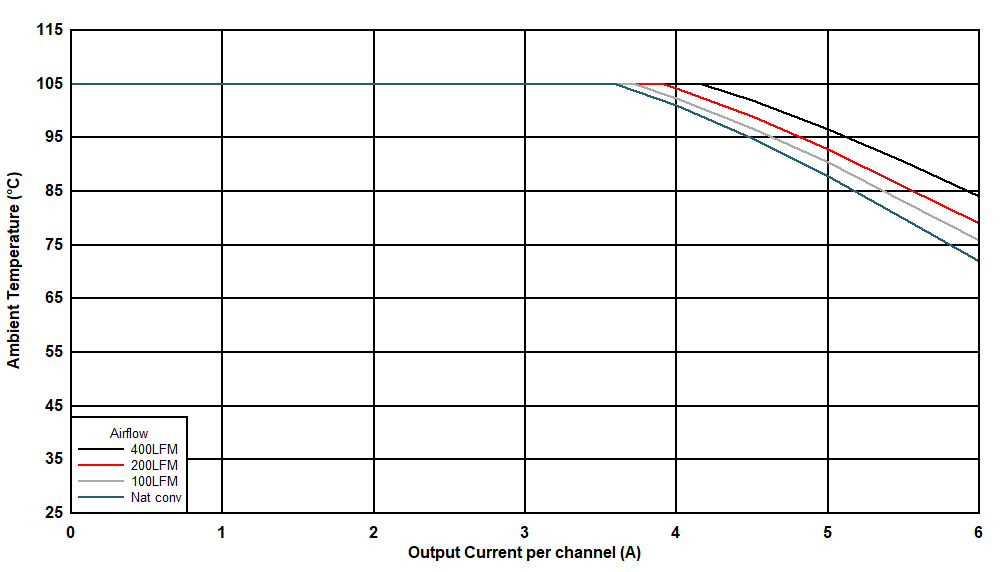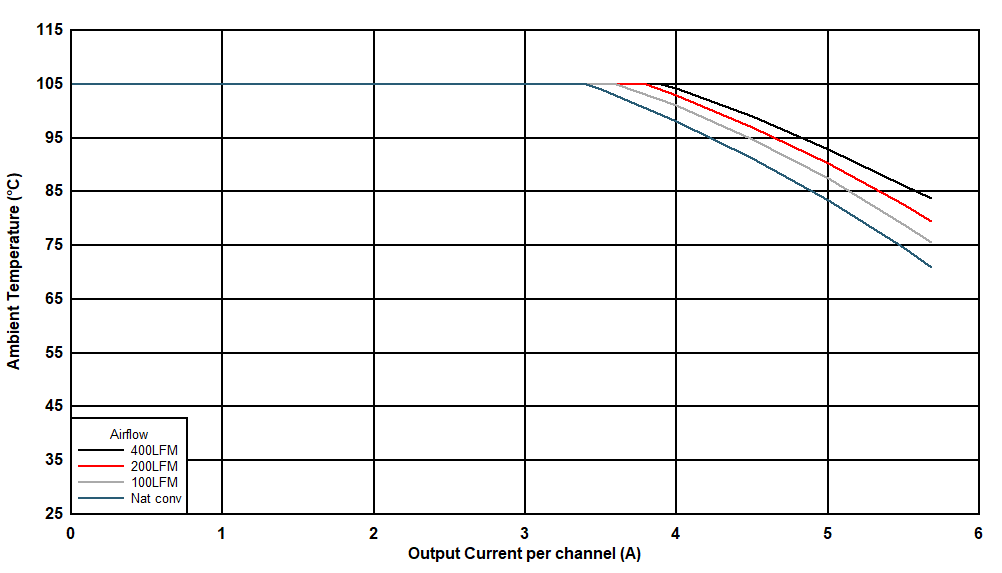SLUSDV8B November 2020 – March 2021 TPSM5D1806
PRODUCTION DATA
- 1 Features
- 2 Applications
- 3 Description
- 4 Revision History
- 5 Pin Configuration and Functions
- 6 Specifications
-
7 Detailed Description
- 7.1 Overview
- 7.2 Functional Block Diagram
- 7.3
Feature Description
- 7.3.1 Adjustable Output Voltage
- 7.3.2 Frequency Selection
- 7.3.3 Minimum and Maximum Input Voltage
- 7.3.4 Recommended Settings
- 7.3.5 Device Mode Configuration
- 7.3.6 Input Capacitors
- 7.3.7 Minimum Required Output Capacitance
- 7.3.8 Ambient Temperature Versus Total Power Dissipation
- 7.3.9 Remote Sense
- 7.3.10 Enable (EN) and Under Voltage Lockout (UVLO)
- 7.3.11 Soft Start
- 7.3.12 Power Good
- 7.3.13 Safe Start-up into Pre-Biased Outputs
- 7.3.14 BP5
- 7.3.15 Overcurrent Protection
- 7.3.16 Thermal Shutdown
- 7.4 Device Functional Modes
- 8 Application and Implementation
- 9 Power Supply Recommendations
- 10Layout
- 11Device and Documentation Support
- 12Mechanical, Packaging, and Orderable Information
Package Options
Mechanical Data (Package|Pins)
- RDB|51
Thermal pad, mechanical data (Package|Pins)
Orderable Information
6.7 Typical Characteristics (VIN = 5 V)
TA = 25°C unless otherwise noted.
 Figure 6-8 Efficiency vs Output Current
Figure 6-8 Efficiency vs Output Current
| Fsw = 1.5 MHz | Dual 1.2-V outputs | IOUT1 = IOUT2 |

| Fsw = 2.0 MHz | Dual 3.3-V outputs | IOUT1 = IOUT2 |
 Figure 6-9 Power
Dissipation vs Output Current
Figure 6-9 Power
Dissipation vs Output Current
| Fsw = 1.0 MHz | Dual 0.8-V outputs | IOUT1 = IOUT2 |

| Fsw = 1.5 MHz | Dual 1.8-V outputs | IOUT1 = IOUT2 |
